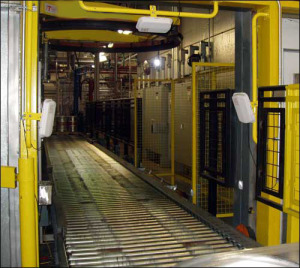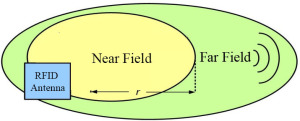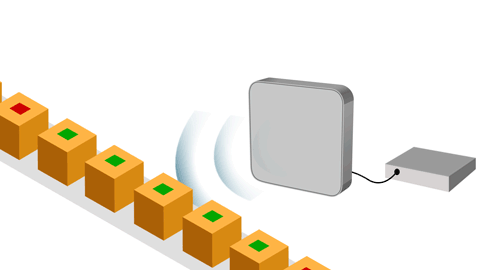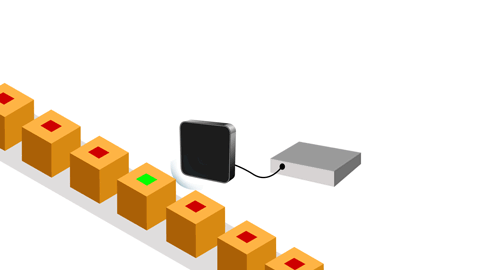How to Create the Optimal Short Range UHF RFID System
Introduction
UHF RFID applications requiring a short read range have several options for hardware and system configurations. In short range RFID systems, RFID tags in proximity can create a significant problem - stray tag reads, which can potentially skew data and desired results. Depending on your application, the following three hardware configurations can be used to create the optimal short range RFID system.
Far-Field Antenna, Far-Field Tag
The most common set-up for producing a UHF RFID short range system involves both far-field antennas and far-field tags. When using this method, the most common obstacle is unintentionally reading multiple tags at once. The following two solutions can be used to resolve the issue:
- Lower the transmit power on the RFID reader. When lowered, the RF field generated by the antenna will become smaller and can eliminate many stray tag reads. A reader’s transmit power can vary greatly, so test various power settings until you can find the lowest possible setting while still being able to read all intended tags.
- Replace your current antenna with a lower gain, far-field antenna. A lower gain antenna will generate a smaller RF field and may eliminate stray tag reads. Test with antennas of various gains to determine which best suits your application.
Reading RFID tags through a portal setup is an example of a short range application using far-field hardware. This scenario requires a few feet of read range, versus the shorter ranges obtained using near-field tags and/or near-field antennas.

Figure 1: Portal system
Far-Field Antenna, Near-Field Tag
Using a far-field antenna and a near-field tag is another option for creating a short range RFID system. Unlike far-field tags, near-field UHF RFID tags are read in the near-field zone of an RFID antenna (see Figure 2).

Figure 2: Near-field vs. Far-field
As with the previous set-up, stray tag reads may still exist if you have multiple tags in the immediate area. Near-field tags reduce stray reads beyond the immediate area because they can only be read in the near-field. The near-field typically extends from contact, up to one wavelength away from the antenna (up to approximately 35 cm).
Jewelry tracking is an example of a short range application that could benefit from this particular setup. Far-field antennas are able to cover more area (on a shelf, for example) and read more near-field tags at one time than a near-field antenna, which leads to a lower cost of deployment as the number of antennas required is reduced.
Near-Field Antenna, Near-Field Tag
If an application is hindered by stray reads because of tag proximity, the most beneficial hardware setup includes both near-field tags and near-field antennas. A near-field antenna provide a small, well-defined read zone ensuring RFID tags can only be read within a few centimeters.
An application involving pharmaceuticals is a key example that may benefit from a near-field antenna to near-field tag configuration. In this application a well-defined read zone is required to read/write one RFID tag at a time. (Of note, such an application can be accomplished using HF technology but if higher speeds are needed for reading and writing, UHF is the best option due to its higher data transmission rate.)

Figure 3: Far-field antenna setup reading multiple RFID tags at a time.

Figure 4: Near-field antenna setup reading one RFID tag at a time.
Conclusion
If you have any additional questions about near-field and far-field systems, please contact us or leave a comment below.
If you’d like to learn more about all things RFID, check out our website or our YouTube channel.
To learn more about RFID, check out the links below!
